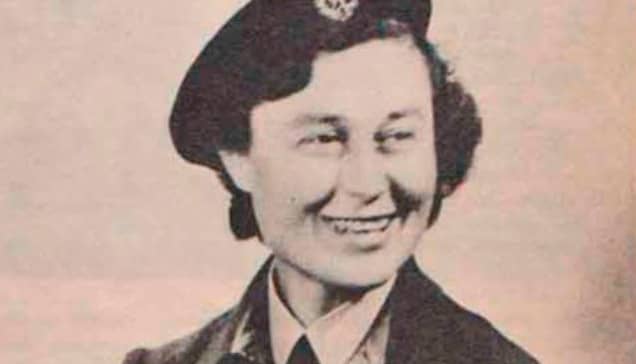Margaret Horton was a Leading Aircraftwoman in the Women’s Auxiliary Air Force (WAAF) during World War II. She was stationed at RAF Hibaldstow, a satellite of Kirton Lindsey in Lincolnshire. Horton worked as a flight mechanic, and her duties included sitting on the tail of Spitfires to prevent them from tipping over in rough weather. On a blustery February 14, 1945, Leading Aircraftwoman Margaret Horton found herself on the cusp of an extraordinary adventure. She was a WAAF (Women’s Auxiliary Air Force) assigned to an RAF squadron, and her task that day was one she knew well: perching on the horizontal stabilizer of a Spitfire to keep the tail steady while it taxied in the wind. But little did she know, her routine assignment was about to take an unexpected turn. Flight Lt. Neill Cox, the pilot of the Spitfire, was blissfully unaware that Horton would be jumping aboard. As Horton later admitted, “the squadron was run in a slap-happy way.” Normally, the tail-sitter would grab the aircraft’s elevator and give it a wiggle before the pilot turned onto the runway, signaling that they were hopping off. But on this fateful day, Cox made a casual gesture from the cockpit that Horton interpreted as, “Hang on, don’t go yet.”
And hang on she did!
…and hang on she did—a decision that would lead to one of the most thrilling rides of her life.
As the Spitfire roared down the runway, Horton quickly realized the gravity of the situation. She flopped across the tail cone, demonstrating quick thinking and agility, held in place by the vertical fin. Her legs dangled to the right, while her torso clung to the left. Meanwhile, another WAAF, who had witnessed the unfolding drama, dashed off to alert a flight sergeant, who in turn sprinted to the control tower. Orders were given for Cox to make a quick circuit and land, though he was not informed of the reason. Between Horton’s death grip on the elevator with her left hand and the Spitfire’s tail-heaviness, Cox could tell something was off, but he couldn’t see as far back as his airplane’s empennage. The Spitfire soared through the sky with Horton hanging on for dear life, the wind whipping past her as she clung to the tail cone.
Can I have a smoke, please?
The world below became a blur, and the adrenaline coursing through her veins made her feel more alive than ever. It was a wild ride she would never forget. After what felt like an eternity, the Spitfire finally touched down. Horton, relieved to be back on solid ground, announced with a cheeky grin that after a change of panties and a cigarette, she’d be ready to return to work. Her daring escapade quickly became the stuff of legends within the squadron.
How dare you lose your uniform beret!?
However, her adventurous spirit did not go entirely unpunished. Horton was later fined for losing her uniform beret during the short, thrilling trip around the pattern. But the story of her wild ride on the Spitfire would live on, a testament to her bravery and quick thinking in the face of unexpected challenges. As the squadron members gathered to recount the tale, it became clear that Margaret Horton’s wild ride was more than just an amusing anecdote. It was a reminder of the courage and resilience of those who served, often finding themselves in extraordinary situations during a time of great uncertainty. And though the winds of fate may have carried Horton on that unforgettable journey, it was her spirit and determination that saw her through to the end.

Neueste Kommentare